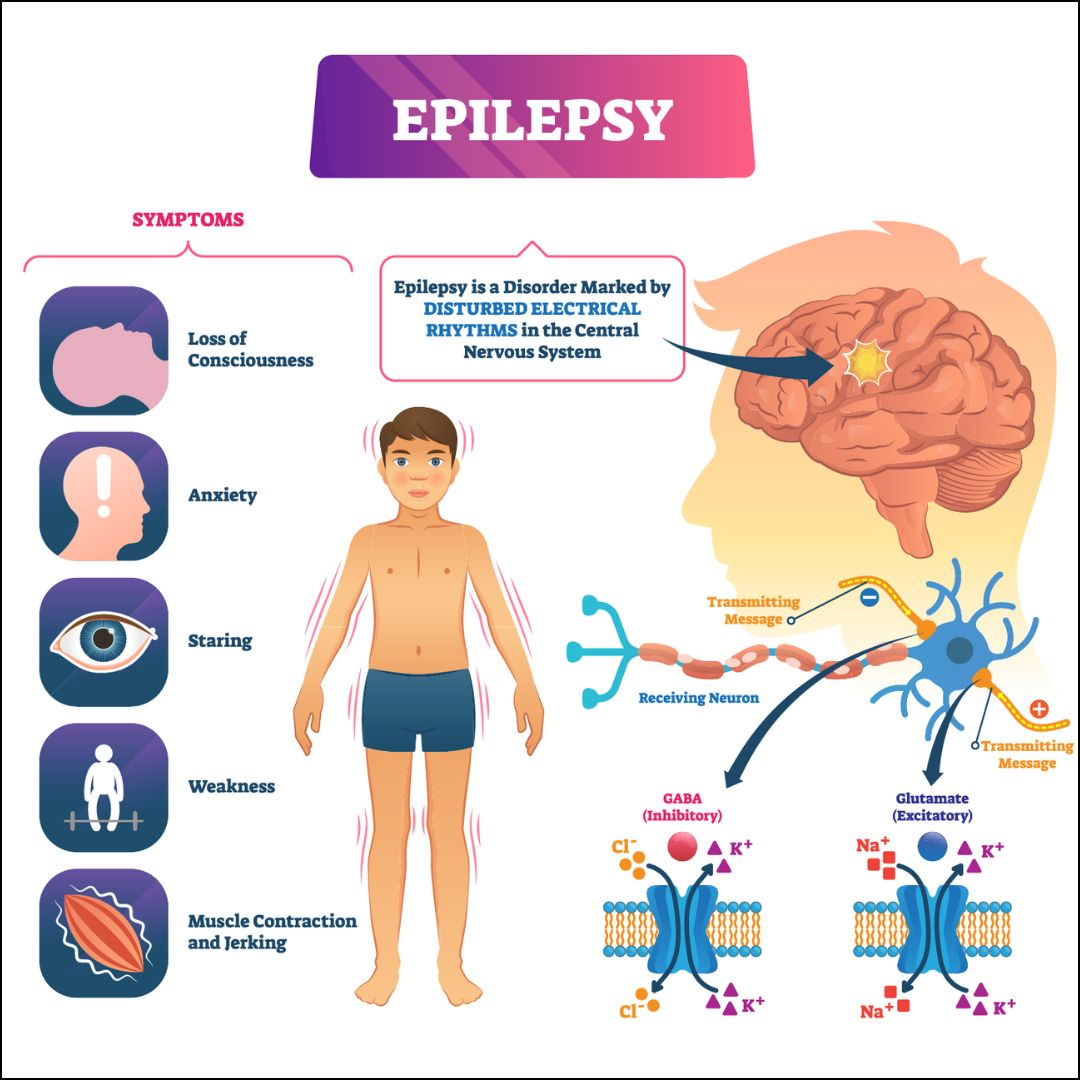Economic Dynamics of Southern Indian States
For Prelims: Gross State Domestic Product, LPG reforms, Foreign Direct Investment, Infant mortality, Bharatmala Pariyojana
For Mains: Regional Disparities in Economic Growth in India, Governance and Reforms on State Economies
Why in News?
Chief Economic Adviser (CEA) V. Anantha Nageswaran emphasized that Southern Indian states should benchmark their economic performance against global standards rather than just other Indian states, highlighting the economic strength of the region and areas requiring improvement.
What is the Economic Contribution of Southern States?
- Economic Contribution: Southern States account for 30% of India’s GDP, with Tamil Nadu and Karnataka leading in Gross State Domestic Product (GSDP) growth after Maharashtra in FY 2024-25.
- Higher Growth Rate: The South records 6.3% annual GSDP growth in real terms, compared to 5% for the rest of India.
- Per capita GDP is rising at over 5%, compared with the rest of India per capita GDP growth of 4.2%.
- Manufacturing & Investment: 37.4% of total factories and 37% of operational factories are located in South India.
- 25.6% of India’s total fixed capital investment comes from the region.
- 33% of India’s manufacturing workforce is based in South India.
Why Do Southern States Outperform the Rest of India?
- Historical Stability: Southern India’s relative stability, unlike the north's repeated foreign invasions, enabled consistent economic and cultural development, with major trade centres like Vijayanagaram, Kanchipuram, Madurai, Mahabalipuram, Kochi, and Kozhikode.
- Colonial Advantage: By the mid-18th century, Madras and Bombay had emerged as major Presidency towns in the south, while the north had only one—Calcutta.
- Portuguese and French influences in the south further boosted early trade and urban development.
- Economic Growth: Southern states outpaced northern states in economic growth post LPG reforms, attracting more industrial investment and FDI.
- Karnataka and Tamil Nadu became hubs for automobile, textile, and Information technology (IT) industries, while Telangana emerged as a biotech and pharmaceutical center (contributes to 1/3rd of the global vaccine output).
- Despite development in Maharashtra, Gujarat, and National Capital Region, uneven growth persists in other regions, with northern states lacking major urban centers, unlike southern states.
- while the Northeast faces significant challenges, including border identification delays, congested roads, and limited connectivity, hindering its trade and development.
- Agricultural Productivity: Tamil Nadu and Karnataka adopted modern farming techniques and diversified into cash crops, horticulture, and aquaculture.
- Northern states like Uttar Pradesh and Bihar relied heavily on traditional crops like wheat and rice, leading to stagnation in productivity.
- Governance: Telangana and Karnataka introduced IT & e-governance reforms that boosted their economies.
- However, cities like Mumbai, Pune, Ahmedabad, Noida, and Gurugram gained economic growth much later than southern cities due to delayed reforms in land, labor, and industry.
- Social Development: At independence, southern states were underdeveloped. Controlled population growth later enabled better resource allocation for development.
- Kerala, Tamil Nadu, and Karnataka have much higher literacy rates. Better schooling infrastructure and focus on education in the South led to a comparatively more skilled workforce than the rest of India.
- Tamil Nadu pioneered the midday meal program, boosting school enrollments, while Andhra Pradesh and Telangana have focused on expanding English-medium education.
- Kerala, with the highest literacy rate in India (96.2%), has developed a highly skilled workforce.
- Poor performance in northern states is due to insufficient investment in education, and infrastructure, driven by political neglect.
- Kerala, Tamil Nadu, and Karnataka have much higher literacy rates. Better schooling infrastructure and focus on education in the South led to a comparatively more skilled workforce than the rest of India.
- Health and Social Indicators: Southern states excel in healthcare, with Kerala having the best infrastructure and low infant mortality (6 per 1,000 births) compared to Madhya Pradesh (46).
- The Maternal Mortality Ratio in Southern India is lower than the national average (103 in 2020).
- Natural Factors: Proximity to ports boosts trade, exports, and industrial growth (Chennai, Kochi, Visakhapatnam).
- Moderate climate supports agriculture, tourism, and living conditions better than extreme weather in the north.
What are the Concerns Regarding the Southern States' Economic Growth?
- Productivity Gap in Manufacturing: The southern region contributes only 26% to the total manufacturing output. Indicates lower productivity and efficiency in manufacturing despite a strong workforce.
- Skill Development Deficiencies: The region has a strong Skill Level 2 workforce (intermediate skills) but lags in Skill Levels 3 and 4 (advanced professional skills in AI, engineering, and high-tech sectors).
- Inadequate investment in higher education and research limits innovation and job creation in high-value industries.
- Declining demography (youth) in southern states, worsened by emigration for better opportunities, risks labour shortages, highlighting the need for an inclusive migrant policy to sustain growth.
- Infrastructure: Urban congestion and energy challenges persist. There is a need for better industrial corridors, logistics networks, and digital infrastructure to attract more global investments.
- Regional Disparities: States like Tamil Nadu and Karnataka lead in economic growth, while others like Andhra Pradesh and Telangana face slower industrialization.
- Rural areas still lag behind urban centers in terms of economic opportunities and infrastructure.
- Climate Change: Southern India is highly vulnerable to climate change, with frequent droughts, cyclones, and extreme weather events. Agriculture and coastal economies are particularly at risk.
- Policy Issues: Many states rely heavily on financial transfers from the central government, reducing their fiscal autonomy and rising state debt ratios are burdening the states.
Way Forward
- Global Benchmarking: Southern states should pursue global competitiveness, with Bengaluru, India’s "Silicon Valley," comparable to California in tech growth.
- Enhance Productivity: Improve manufacturing productivity to align workforce participation with output. Invest in skill upgrades, especially in high-value manufacturing and encourage Industry 4.0 adoption.
- Infrastructure Improvement: Strengthen industrial corridors, logistics networks, and digital infrastructure through Bharatmala Pariyojana to boost global trade and attract foreign investment.
- Expand industrial corridors linking North-South and East-West economic zones for balanced growth.
- Tourism Potential: Leverage southern states' rich temple heritage and promote sustainable coastal tourism.
- Strengthen Revenue Growth: Enhance tax collection through GST and promote Production Linked Incentives (PLI) for sustainable fiscal space.
- Inclusive Growth: Reduce regional disparities by developing less industrialized areas through Smart Cities Mission (SCM) and Regional Connectivity Scheme (RCS).
- Northern states can adopt Kerala's healthcare and education models to boost human development, which in turn boosts economic growth through a ripple effect.
- Build and expand inland waterways along major rivers like the Ganga and Yamuna to enhance regional connectivity and trade.
|
Drishti Mains Question: Analyze the impact of social development indicators on the economic performance of Southern states. |
UPSC Civil Services Examination, Previous Year Questions (PYQs)
Q. With reference to Indian economy, consider the following statements: (2015)
- The rate of growth of Real Gross Domestic Product has steadily increased in the last decade.
- The Gross Domestic Product at market prices (in rupees) has steadily increased in the last decade.
Which of the statements given above is/are correct?
(a) 1 only
(b) 2 only
(c) Both 1 and 2
(d) Neither 1 nor 2
Ans: (b)
Competitive and Cooperative Federalism
For Prelims: Competitive and Cooperative Federalism, Finance Commission (FC), Goods and Services Tax (GST), Seventh Schedule, Inter-State Council, Zonal Councils, NMM, IIPDF, B-READY Program, GST Council.
For Mains: Role of competitive and cooperative Federalism in strengthening the Indian economy.
Why in News?
The government has emphasized various initiatives to foster competitive and cooperative federalism and its benefits.
What is Competitive and Cooperative Federalism?
- Competitive Federalism: It is a system of horizontal (state-state) and vertical (Centre-state) competition to attract investment, improve governance, and enhance services.
- The 15th Finance Commission (FC) has introduced indicators like tax & fiscal efforts to evaluate state performance, that determines fund allocation.
- State-Level Reforms: Examples of state-specific welfare schemes that operate alongside central schemes include:
- Rythu Bandhu (Telangana): A direct income support scheme for farmers.
- KALIA (Odisha): A farmer assistance scheme complementing the central PM Kisan Yojana.
- Vibrant Gujarat Summit: Focused on attracting global investment.
- Cooperative Federalism: It fosters Centre-state collaboration for effective governance, balanced development, and shared best practices.
- FC’s performance-based fund allocation encourages states to work in alignment with national SDGs.
- Key examples include the Goods and Services Tax (GST), Ayushman Bharat, and PM-KISAN, that require Centre-state cooperation.
- The All India Services (IAS and IPS) enable a uniform governance structure across states.
- The States Reorganization Act, 1956 established five Zonal Councils for regional cooperation, facilitating discussions on inter-state issues.
- FC’s performance-based fund allocation encourages states to work in alignment with national SDGs.
- Constitutional Provisions:
- 7th Schedule: The Seventh Schedule of the Indian Constitution divides legislative powers between the Centre and states for effective governance.
- Full Faith and Credit Clause (Article 261): It ensures recognition of public acts, records, and judicial proceedings across states, promoting legal and administrative uniformity.
- Inter-State Council (ISC): The ISC, established under Article 263, resolves intergovernmental disputes and became a permanent body on 28th May 1990, per Sarkaria Commission recommendations.
- Inter-State Water Disputes (Article 262): Parliament has the power to adjudicate inter-state water disputes.
What are the Benefits of Competitive and Cooperative Federalism?
- Competitive Federalism:
- Economic Efficiency: It allows states to design policies tailored to their local needs, leading to increased investment, job creation, and overall economic growth.
- Policy Innovation: States compete by experimenting with governance models, regulatory frameworks, and public service delivery systems, leading to innovative policy solutions and best practices.
- Fiscal Discipline: It strengthens fiscal discipline, as states must balance revenue generation with expenditure management to attract businesses and investors, ensuring responsible fiscal policies.
- Public Service Quality: Competition among states pushes them to improve public service quality like infrastructure, education, healthcare, and other essential services to retain skilled workers and businesses.
- Cooperative Federalism:
- Balanced Regional Development: It helps in reducing regional disparities and ensuring equitable development across states by fostering collaboration between central and state governments.
- Facilitates Resource Sharing: Joint initiatives in areas such as infrastructure, disaster management, and environmental protection ensure efficient resource utilization and prevent unnecessary duplication of efforts.
What are the Challenges in Competitive and Cooperative Federalism in India?
- Competitive Federalism:
- Quasi-Federalism: The Union holds superior legislative powers through residuary list and precedence in the concurrent list, often overriding state authority and creating conflicting federalism.
- Taxation Disputes: Most taxation disputes have been resolved in favor of the Centre due to constitutional provisions that grant it more control over revenue distribution.
- GST reduced state taxation powers, surrendering octroi, entry, luxury, and entertainment taxes.
- Unchecked Competition: In India, competition often takes a Tughlakian turn, States undercut each other with reckless subsidies while bureaucratic hurdles remain firmly intact that negates reforms benefits.
- Unchecked competition can lead to excessive tax breaks, fiscal mismanagement, and subsidy dependence, risking stability.
- Conflict Between FC and GST Council: Article 269A(1) empowers the GST Council to recommend tax-sharing for inter-state trade, but Articles 270(1A) and 270(2) states that the taxes levied under the GST laws will be shared as per recommendation of the FC, not the GST Council.
- This imbalances both cooperative federalism (GST) and competitive federalism (FC).
- Cooperative Federalism:
- Inequitable Distribution of Central Tax Revenue: States like West Bengal, Assam, Bihar, and Odisha argue that uniform funding ignores economic disparities and seek special financial aid for growth and investment.
- Wealthier states attract more investment due to better infrastructure, skilled labor, and capital, while weaker states lag behind.
- Inequitable Distribution of Central Tax Revenue: States like West Bengal, Assam, Bihar, and Odisha argue that uniform funding ignores economic disparities and seek special financial aid for growth and investment.
What are Various Initiatives to Promote Competitive and Cooperative Federalism?
- Investment Friendliness Index (IFI): IFI will be launched in 2025 to provide a transparent benchmark to assess states' investment attractiveness.
- Public rankings and tying rankings to financial access will create reputational incentives, electoral and economic pressure to enhance governance.
- PPP Project Pipelines: Budget 2025-26 requires ministries and states to plan three-year PPP projects, boosting competition to attract private sector investment efficiently for infrastructure.
- Business Reform Action Plan (BRAP): BRAP drives state-level business reforms through rankings and implementation.
- The 2024 BRAP will emphasize compliance reduction, decriminalization, and alignment with the World Bank’s B-READY program.
- Finance Commission (FC): FC promotes cooperative and competitive federalism by ensuring equitable financial distribution while incentivizing governance, fiscal discipline, and economic performance.
- National Manufacturing Mission (NMM): NMM offers a unified policy framework, execution roadmaps, and governance mechanisms to drive state competition in ease of doing business, infrastructure, and investment attraction.
- India Infrastructure Project Development Fund (IIPDF): The IIPDF promotes cooperative federalism by offering financial and technical support, ensuring states of all fiscal capacities can equitably contribute to national infrastructure development.
Way Forward
- Enhancing the Role of NITI Aayog: NITI Aayog should prioritize micro-level planning and collaborate with states to tailor policies, addressing regional economic disparities effectively.
- States can establish their own NITI Aayog-style institutions to design and implement policies suited to local needs.
- Strengthening ISC: The meeting of ISC needs to be held regularly (last met in 2016) for resolving disputes on taxation, resource-sharing, and governance.
- Addressing Economic Disparities: Policies should be framed in a way that considers the specific economic strengths and weaknesses of states.
- E.g., Jharkhand should attract mining and manufacturing investment, while Kerala must build a high-end service industry.
- Clear Defining Role of Bodies: FC and GST Council need clear roles to avoid tax-sharing conflicts, while the judiciary should ensure fairness in Centre-State relations.
- FC can bring provisions to curb excessive freebies by implementing a conditional grants framework.
|
Drishti Mains Question: Suggest policy measures to promote competitive and cooperative federalism in India. |
UPSC Civil Services Examination Previous Year’s Question (PYQs)
Mains
Q. How far do you think cooperation, competition and confrontation have shaped the nature of federation in India? Cite some recent examples to validate your answer. (2020)
Q. From the resolution of contentious issues regarding distribution of legislative powers by the courts, ‘Principle of Federal Supremacy’ and ‘Harmonious Construction’ have emerged. Explain. (2019)
India-UK Agreements in Aero India 2025
For Prelims: MANPADs, Advanced Short-Range Air-to-Air Missile (ASRAAM), Offshore Wind Energy, Power Sector Reforms, International Traffic in Arms Regulations (ITAR), Konkan Shakti, Exercise Cobra Warrior, Ajeya Warrior, World Bank, Green Grids Initiative, Infrastructure for Resilient Island States, COP26.
For Mains: India and the United Kingdom (UK) relations regarding defence and green energy.
Why in News?
India and the United Kingdom (UK) signed multiple defence agreements at Aero India 2025 to strengthen defence ties.
- In another development, the 4th India-UK Energy Dialogue took place focusing on sustainable, resilient, and inclusive energy future.
What are the Recent Developments in India-UK Ties?
- Defence:
- Defence Partnership–India (DP-I): DP-I was launched that aims to strengthen and streamline bilateral defense collaboration.
- Defence Manufacturing: Both entered into a contract to supply Laser Beam Riding MANPADs (LBRM), beginning with an initial delivery of High Velocity Missiles (STARStreak) and launchers.
- Both will produce Lightweight Multirole Missiles (LMMs), incorporating Indian industries into the UK's global supply chain.
- Both will establish India's first Advanced Short-Range Air-to-Air Missile (ASRAAM) assembly and test facility in Hyderabad to equip fighter jets and support global exports.
- Electric Propulsion System: Both agreed to develop an Integrated Full Electric Propulsion (IFEP) system for India's next-gen Landing Platform Dock (LPD) fleet, aiming for LPD delivery by 2030.
- Energy:
- ASPIRE Phase-2: The 2nd phase of India-UK Accelerating Smart Power & Renewable Energy in India (ASPIRE) programme was launched.
- ASPIRE program, a UK-India initiative, supports 24/7 power supply, and boosts industrial energy efficiency and decarbonization.
- Wind Taskforce: Both launched a UK-India Offshore Wind Taskforce to strengthen offshore wind to enhance ecosystems, supply chains, and financing.
- Both announced the continuation of the Power Sector Reforms programme under UK Partnering for Accelerated Climate Transitions (UKPACT).
- UK PACT supports emerging economies like India in their transition to low-carbon, sustainable growth.
- Both announced the continuation of the Power Sector Reforms programme under UK Partnering for Accelerated Climate Transitions (UKPACT).
- ASPIRE Phase-2: The 2nd phase of India-UK Accelerating Smart Power & Renewable Energy in India (ASPIRE) programme was launched.
How Can the UK Strengthen India's Defence?
- New Defence Technologies: Under the India-UK 2030 Roadmap, the UK offers critical tech, including jet engine development and electric propulsion.
- Self-Reliance: Supports ‘Make in India, Make for the World’ by co-developing next-gen defence capabilities.
- Strategic Military Presence: Establishing a Littoral Response Group in the Indian Ocean for joint training, with bases in Oman, Nepal, Brunei, Diego Garcia, and Singapore.
How Can the UK Support India's Green Transition?
- Investment: USD 1 billion in green projects via British Investment International and a USD 1 billion World Bank guarantee.
- Offshore Wind: UK’s expertise to aid India’s 30 GW offshore wind goal by 2030.
- Renewable Energy: 67 million Euros invested in Indian solar, water, and climate projects, adding 413 MW renewables and reducing 1.14 million tonnes of emissions.
- Clean Energy Initiatives: UK’s Clean Growth Programme supports business expansion in India's 1.8 trillion Pounds clean energy sector.
- Global Collaboration: India-UK launched the Green Grids Initiative at COP26, with India joining Glasgow Breakthroughs and the Zero EV Declaration.
What are Key Points Regarding India-UK Ties?
- Trade Relations: India was the UK’s 11th largest trading partner in 2024 and bilateral trade stands at 42 billion Pounds.
- India-UK Joint Economic and Trade Committee (JETCO) was established in 2005 to enhance bilateral economic cooperation
- Investment: India was the UK’s 2nd-largest FDI source in 2022-23.
- The UK is India’s 6th largest investor, with USD 33.88 billion in FDI (April 2000 - March 2023), contributing 5.34% of total inflows.
- Defence Cooperation: Konkan Shakti was the first India-UK tri-service exercise, strengthening defence ties. India joined Exercise Cobra Warrior (air exercise), while Ajeya Warrior fosters Army collaboration.
- Education: The Mutual Recognition of Academic Qualifications was signed in July 2022, facilitates academic cooperation.
- Indian student enrollments in UK universities reached 185,000 in 2022-23.
- People-to-People Ties: Migration and Mobility Partnership (MMP) was signed in May 2021, facilitating the movement of professionals between India and the UK.
- The Young Professional Scheme (YPS), announced at the G20 Bali Summit, allows graduates (18-30) from both countries to live and work for two years.
Conclusion
India and the UK are deepening their strategic partnership in defence and clean energy through technology transfers, investments, and collaborative initiatives. Their joint efforts in offshore wind, electric mobility, and defence manufacturing align with India's self-reliance goals, ensuring mutual economic benefits while advancing global sustainability and security objectives.
|
Drishti Mains Question: Analyse the importance of international cooperation for achieving self reliance in defence technology. |
UPSC Civil Services Examination Previous Year Question
Prelims
Q. We adopted parliamentary democracy based on the British model, but how does our model differ from that model?
- As regards legislation, the British Parliament is supreme or sovereign but in India, the power of the Parliament to legislate is limited.
- In India, matters related to the constitutionality of Amendment of an Act of the Parliament are
- referred to the Constitution Bench by the Supreme Court.
Select the correct answer using the code given below.
(a) 1 only
(b) 2 only
(c) Both 1 and 2
(d) Neither 1 nor 2
Ans: (c)
Mains
Q. The new tri-nation partnership AUKUS is aimed at countering China’s ambitions in the Indo-Pacific region. Is it going to supersede the existing partnerships in the region? Discuss the strength and impact of AUKUS in the present scenario. (2021)
Q. Describe the major outcomes of the 26th session of the Conference of the Parties (COP) to the United Nations Framework Convention on Climate Change (UNFCCC). What are the commitments made by India in this conference? (2021)
Q. The judicial system in India and the UK seem to be converging as well as diverging in recent times. Highlight the key points of convergence and divergence between the two nations in terms of their judicial practices. (2020)
Bombay Blood Group
Why in News?
A woman with the rare ‘Bombay’ (hh) blood group underwent a successful kidney transplant in India.
What is Bombay Blood Group?
- About: It was identified in Mumbai in 1952, and also called the hh blood group due to the absence of the H antigen.
- Antigens are proteins or carbohydrates on blood cells (RBCs, WBCs and platelets) that determine blood type. E.g., AB blood group has both A and B antigens, A has A antigens, B has B antigens, and O has none.
- In the Bombay blood group, a mutated or absent H antigen gene prevents A, B, or O antigen formation.
- Rarity: It is exceptionally rare and found in approximately 1 in 10,000 Indians and 1 in a million people globally.
- Problems in Blood Transfusion: Individuals with hh blood groups can't receive any A, B, AB or O blood, including O-negative, as they contain the H antigen.
- The recipient’s immune system recognizes donor antigens as foreign (antibodies), and triggers a severe immune reaction.
- About Blood Group: Under the ABO blood group system, blood groups are classified into four common blood groups i.e. A, B, AB and O.
- It was first identified by Austrian immunologist Karl Landsteiner in 1901.
- Cross-blood Transplants: Cross-blood transplants (donors and recipients have different blood types) uses double filtration plasmapheresis (DFPP) process for blood transfusion.
- In DFPP, the antibodies are removed from the recipient's (patient's) blood, using special filters for safer transfusion (suppress immune response).
- If the recipient antibodies are not removed, they can cause hemolysis (destruction of donor RBCs) after transfusion.
UPSC Civil Services Examination, Previous Year Question (PYQ)
Prelims
Q. A married couple adopted a male child. A few years later, twin boys were born to them. The blood group of the couple is AB positive and O negative. The blood group of the three sons is A positive, B positive and O positive. The blood group of the adopted son is(2011)
(a) O positive
(b) A positive
(c) B positive
(d) Cannot be determined on the basis of the given data
Ans: (a)
Structural Changes in Earth's Inner Core
Why in News?
- A study published in Nature Geoscience reveals that Earth's inner core is undergoing structural changes.
What are the Key Findings of the Study?
- Methodology: Researchers analyzed seismic waves near Antarctica’s South Sandwich Islands from 1991 to 2024. Repeating earthquakes revealed subtle changes in seismic waves, offering insights into Earth’s inner structures.
- Structural Changes in Inner Core: The near surface of Earth's inner core is undergoing structural changes, challenging the earlier belief that it is rigid and stable.
- The inner core's rotation appears to be slowing down, which could subtly alter the length of a day on Earth.
- Researchers suggest viscous deformation in the inner core is caused by dynamic interactions between the turbulent, molten outer core and the solid inner core, similar to how magma flows under stress.
What are the Key Facts About Earth's Inner Core?
- Structure: The inner core is a hot, dense ball primarily made of iron and nickel. Unlike the liquid outer core, the inner core remains solid due to immense pressure from Earth's upper layers.
- Depth and Size: Located 5,150 km beneath the surface, at Earth's center. It has a radius of about 1,220 km.
- The boundary between the inner and outer core is called the Lehmann Discontinuity.
- Magnetism: The inner core influences Earth's magnetic field, while the outer core's swirling liquid iron generates it through the geodynamo effect (magnetic field generation).
- The inner core has high thermal and electrical conductivity.
- Rotation: The inner core rotates eastward slightly faster than the Earth's surface, completing an extra rotation every 1,000 years.
- Growth: The inner core grows by about 1 mm per year as the liquid outer core solidifies.
- Growth is uneven, occurring more around subduction zones and less near superplumes.
- The core will never fully solidify due to slow crystallization and continuous radioactive decay.
Earth’s Interior
- The Earth’s interior is structured in concentric layers, similar to an onion. These layers are:
- Crust (Outermost Layer): The thinnest layer, varying in thickness:
- Continental crust: ~35 km thick, composed mainly of silica (Si) and alumina (Al), referred to as "sial" for the continental crust.
- Oceanic crust: ~5 km thick, oceanic crust contains silica (Si) and magnesium (Mg), called "sima".
- Mantle (Thickest Layer): Extends up to 2900 km below the crust. Composed of silicate minerals rich in iron and magnesium.
- The upper part contains the asthenosphere, a semi-molten layer responsible for plate movements.
- Core (Innermost Layer): Extends up to 3500 km in radius. Composed of nickel (Ni) and iron (Fe), called "nife".
- Divided into Outer Core (liquid state, generates Earth's magnetic field) and Inner Core.
- Crust (Outermost Layer): The thinnest layer, varying in thickness:
UPSC Civil Services Examination, Previous Year Question (PYQ)
Prelims
Q. In the structure of planet Earth, below the mantle, the core is mainly made up of which one of the following? (2009)
(a) Aluminium
(b) Chromium
(c) Iron
(d) Silicon
Ans: (c)
Expenditure on Higher Education
Why in News?
The NITI Aayog released a report titled ‘Expanding Quality Higher Education through States and State Public Universities’.
- It is a first-of-its kind policy document in the higher education sector focused specifically on States and State Public Universities (SPUs).
What are the Key Findings of the NITI Aayog Report on Higher Education?
- Education Expenditure:
- Overall Expenditure: Jammu & Kashmir (8.11%) leads in education spending, followed by Manipur (7.25%), while Delhi allocates significantly less (1.67%).
- Higher Education Expenditure: Bihar ranks highest at 1.56%, followed by Jammu & Kashmir (1.53%) and Manipur (1.45%) while Telangana (0.18%) has the lowest percentage.
- Per Youth Education Spending: Kerala, Tamil Nadu, Maharashtra, Andhra Pradesh, and Telangana are among the top spenders on higher education, while Rajasthan, Punjab, and Chhattisgarh lag behind.
- University Density: The national average university density (universities per 1 lakh eligible population (18-23 years of age) in a state) is 0.8.
- Sikkim has the highest university density (10.3), followed by Arunachal Pradesh, Ladakh, and Himachal Pradesh, while Bihar has the lowest (0.2).
- Gender Parity: Kerala, Chhattisgarh, and Himachal Pradesh have higher female enrolment, while Chandigarh, Mizoram, and Andaman & Nicobar Islands have balanced enrolments.
Note:
- According to the Economic Survey 2024-25, Education expenditure grew by 12% annually, reaching Rs 9.2 lakh crore in FY25.
- Dropout rates fell to 1.9% (primary) and 14.1% (secondary), while higher education enrolment rose 26.5% (2014-2022), raising Gross Enrollment Ratio (GER) to 28.4%.
- Higher education GER needs to reach 50% by 2035.
- Digital divide persists, with lower internet access in rural areas (55%) compared to urban (69%).
- Dropout rates fell to 1.9% (primary) and 14.1% (secondary), while higher education enrolment rose 26.5% (2014-2022), raising Gross Enrollment Ratio (GER) to 28.4%.
UPSC Civil Services Examination, Previous Year Question (PYQ)
Prelims
Q. Which of the following provisions of the Constitution of India have a bearing on Education? (2012)
- Directive Principles of State Policy
- Rural and Urban Local Bodies
- Fifth Schedule
- Sixth Schedule
- Seventh Schedule
Select the correct answer using the codes given below:
(a) 1 and 2 only
(b) 3, 4 and 5 only
(c) 1, 2 and 5 only
(d) 1, 2, 3, 4 and 5
Ans: (d)
HS Code for GI-Tagged Rice Exports
India has amended the Customs Tariff Act, 1975, and became the first country to introduce an Harmonised System (HS) code for Geographical Indication (GI) tagged rice varieties.
- Announced in the 2025-26 Budget, the amendment includes HS Code 1006-30-11 (parboiled rice) and 1006-30-91 (white rice) for exports.
- The HS Code allows uninterrupted exports of GI-tagged rice, even during general rice export bans, without requiring special government notifications.
- HS Code: The HS managed by the World Customs Organization (WCO) and updated every five years, is a global standard for classifying traded goods using six-digit codes, with countries adding extensions for further classification.
- It helps in identification, duties, and trade statistics.
- Recognized GI Rice Varieties: The Indian Patent Office has given a GI tag to 20 rice varieties including Navara, Palakkadan Matta, Pokkali, Wayanad Jeerakasala, and others.
- Pending GI Applications: 20 rice varieties, including Seeraga Samba, Jammu and Kashmir Red Rice, and Wada Kolam Paddy, await GI recognition.
- WCO: Founded in 1952, is an intergovernmental body enhancing customs efficiency worldwide. It represents 183 customs administrations (including India) handling 98% of global trade. Headquartered in Brussels, Belgium.
Read more: Minimum Export Price for Rice
Asian Elephants
A study on Asian Elephants (Elephas maximus) reveals new insights about their vocalizations.
- Key Findings: Asian elephants communicate using trumpets, roars, rumbles, and chirps to seek attention and express emotions.
- Earlier beliefs suggested trumpeting was mainly a response to human disturbances, but new findings show it is used in social interactions and play.
- Asian Elephants:
- Subspecies: Three subspecies of Asian elephants include Indian, Sumatran, and Sri Lankan.
- Population: Fewer than 50,000 remain in fragmented populations across 13 countries.
- Habitat: Found in grasslands, scrublands, evergreen and deciduous forests.
- Size and Appearance: Smaller than African elephants with proportionally smaller ears.
- Importance: Elephants, India’s Natural Heritage Animal, are a Keystone Species vital for forest health. They create clearings for forest regeneration and dig for water, aiding other wildlife.
- Protection Status:
- IUCN Red List: Endangered
- Wildlife (Protection) Act, 1972: Schedule I
- Convention on International Trade in Endangered Species of Wild Fauna and Flora (CITES): Appendix I
- India’s Initiatives: Project Tiger & Elephant was introduced by merging the previous Project Tiger and Project Elephant schemes, focusing on protecting elephants and their habitats.
- 33 Elephant Reserves have been established in 14 major elephant States (highest population in Karnataka, followed by Assam and Kerala).
Read more: World Elephant Day 2023
Nari Adalat Program
The Government of India is inviting proposals from other states and Union territories to expand the Nari Adalat Program.
- About: Nari Adalat, under the 'Sambal' sub-scheme of Mission Shakti, provides an alternative grievance redressal mechanism for women at the gram panchayat level, resolving minor disputes (e.g., domestic violence, dowry, child custody) through negotiation, mediation, and reconciliation.
- Structure and Functioning:
- Members: Comprises 7 to 11 members known as 'Nyaya Sakhis', nominated by the gram panchayat.
- Implementation: Started in 2023 on a pilot basis in 50 gram panchayats each in Assam and Jammu & Kashmir, with plans to expand to other states.
- Mission Shakti: It has two sub-schemes.
- Sambal: Focuses on women's safety and security, including One Stop Centres (OSC), Women Helplines, Beti Bachao Beti Padhao (BBBP), and Nari Adalat.
- Samarthya: Focuses on women's empowerment, including Pradhan Mantri Matru Vandana Yojana (PMMVY), Palna, Shakti Sadan, Sakhi Niwas, and Hub for Empowerment of Women.
Read more: Mission Shakti
International Epilepsy Day
The Ministry of Social Justice and Empowerment conducted nationwide programs on International Epilepsy Day (2nd Monday of February) to promote effective epilepsy management and treatment awareness.
- National Epilepsy Day (India) is observed on 17th November.
Epilepsy
- About: Epilepsy is a chronic brain disorder caused by abnormal electrical activity in the brain, leading to seizures—brief episodes of involuntary movement and loss of consciousness.
- It is recognised by the WHO as a neurological disorder.
- Causes: The disease has no identifiable cause in nearly 50% of the cases. However, it is linked to genetics, brain injuries, infections, stroke, tumors.
- Symptoms: It is varying with some losing awareness, some stare blankly, while others experience convulsions (twitching movements).
- Treatment Options:
- First-line treatment for epilepsy includes anti-seizure medications, while a ketogenic diet (high-fat, low-carb) is effective for drug-resistant cases.
- Surgical options include removing seizure-affected brain regions or corpus callosotomy to prevent seizure spread.
- DBS Brain Implant: Implanting a medical device with electrodes to specific brain regions linked to seizures.
- Global Context: 50 million people worldwide have epilepsy, with 80% in low- and middle-income countries.
- Proper diagnosis and timely treatment can manage 70% of cases, allowing seizure-free lives.






